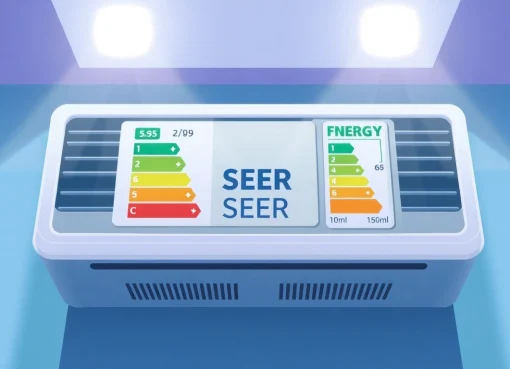When is the Right Time for an Electrical Panel Upgrade? Key Insights and Benefits

Understanding Electrical Panel Upgrades
Upgrading your electrical panel is a significant decision that can enhance the functionality, safety, and efficiency of your home’s electrical system. An Electrical Panel Upgrade allows you to meet the growing demands of modern electrical appliances while ensuring safe and reliable power delivery. In this guide, we will delve into the critical components of electrical panel upgrades, the benefits they provide, and the factors to consider before embarking on this important home improvement project.
What is an Electrical Panel Upgrade?
An electrical panel, often referred to as the breaker box, is the central hub that distributes electrical circuits throughout your home. Its primary function is to divide the electrical current from the utility company into separate circuits that control everything from lighting to large appliances. Over time, as your household’s electrical needs increase, the existing panel may not suffice. An electrical panel upgrade involves replacing or enhancing your panel to accommodate more circuits, increase safety features, and improve overall electrical efficiency.
Signs You Need an Upgrade
Recognizing the signs that indicate the need for an electrical panel upgrade is crucial for maintaining a safe home environment.
- Frequent Circuit Breaker Trips: If your circuit breakers are tripping frequently, or if fuses blow often, this may be a sign that your panel can’t handle the electrical load.
- Old Age: Most panels have a lifespan of 25-40 years. If yours is older than this, it may struggle to meet current electrical demands.
- Inadequate Amperage: Many older homes have 60-amp panels, which may be insufficient. Modern households generally require 100-200 amps.
- Signs of Electrical Overload: Flickering lights, warm outlets, and a burning smell can indicate overloaded circuits.
- Plans for Home Renovations: Upgrading your electrical system may be necessary if you plan to add new appliances, or dedicated circuits for electric vehicles, or perform significant renovations.
Benefits of Electrical Panel Upgrade
Investing in an electrical panel upgrade provides numerous benefits. Here are some of the most significant advantages:
- Increased Electrical Capacity: An upgraded panel allows for more circuits and higher amperage, enabling your home to support more devices and appliances efficiently.
- Enhanced Safety: Modern panels come with advanced safety features such as GFCI and AFCI breakers that protect against overloads and electrical fires.
- Improved Energy Efficiency: Newer models are designed for better energy efficiency, potentially lowering your electric bills.
- Home Value Boost: A new electrical panel can add value to your home, making it more appealing to potential buyers.
- Convenience: An upgraded panel can accommodate dedicated circuits for high-demand devices, reducing the need for power strips and extension cords.
Cost Considerations for Upgrading Your Electrical Panel
Understanding the costs associated with upgrading your electrical panel is essential for budgeting your project. This section outlines typical costs, factors affecting pricing, and potential financial assistance options.
Typical Costs Involved in Panel Upgrades
On average, the cost of upgrading an electrical panel ranges from $800 to $4,000, depending on various factors. Here’s a breakdown of potential costs:
- Labor Costs: Hiring a licensed electrician typically costs between $50 and $100 per hour, and an upgrade may take several hours to a full day.
- Materials: The price of new panels varies based on amperage. A 200-amp panel can cost between $400 and $800.
- Permits: Local building permits can add another cost, generally ranging from $50 to $200.
- Additional Features: If upgrading involves bringing your wiring up to code, adding new circuits, or installing new outlets, costs may increase significantly.
Factors Influencing Upgrade Pricing
Several factors can affect the overall cost of upgrading your electrical panel:
- Panel Capacity: Upgrading from a 100-amp panel to a 200-amp panel will be more expensive than increasing from 60 amps to 100 amps.
- Location: Labor costs may vary by region, particularly in urban areas where demand is higher.
- Condition of Electrical System: The existing wiring and overall condition of your electrical system may necessitate additional work, increasing costs.
- Accessibility: If your electrical panel is in a difficult or hard-to-reach location, this may add to labor costs.
Financial Assistance and Rebates
Many homeowners may be eligible for financial assistance or rebates for upgrading their electrical panels, especially when integrating renewable energy solutions or electric vehicle chargers. Here are some resources to consider:
- Tax Credits: Programs such as the Residential Energy Efficient Property Credit and EV tax credits may apply.
- Local Utility Rebates: Some utility companies offer incentives for energy-efficient upgrades, including electrical panel enhancements.
- Government Programs: Check with local or state governments for any available grants or low-interest loans for electrical upgrades.
DIY vs Professional Upgrades
Determining whether to tackle an electrical panel upgrade as a DIY project or hire a professional is a critical decision. Assessing your skills and understanding the implications of each option is essential.
Assessing Your Skill Level
While some homeowners may feel confident in their electrical skills, it is essential to consider the complexity of electrical panel upgrades:
- Experience Required: Upgrading a panel involves working with high-voltage electrical systems, which can be dangerous without proper training.
- Safety Risks: Incorrect installation can lead to severe safety hazards, including fires, electrocution, and damage to home appliances.
- Legal Requirements: Many localities require permits and inspections for electrical work, which can complicate DIY projects.
Why Hire a Professional Electrician?
The benefits of hiring a licensed electrician for your electrical panel upgrade include:
- Expertise: Professionals have the training and experience needed to handle complex electrical tasks safely and efficiently.
- Compliance: A licensed electrician ensures that all work is completed in compliance with local building codes and regulations.
- Time Savings: Professionals can often complete upgrades faster and more efficiently than a homeowner attempting to do it themselves.
- Warranty and Insurance: Professional work often comes with warranties, and licensed electricians carry insurance that protects against accidents.
Common Mistakes to Avoid During an Upgrade
When upgrading your electrical panel, it’s essential to avoid common pitfalls, whether you are DIY-ing or overseeing a professional job:
- Ignoring Local Codes: Each jurisdiction has specific codes for electrical installations; failing to comply can lead to fines or necessitate rework.
- Inadequate Load Calculation: Failing to accurately calculate the electrical load can lead to overloading your new panel.
- Underestimating Time and Costs: Many DIYers overlook the additional costs and time associated with purchasing materials and obtaining permits.
- Neglecting Safety Precautions: Always ensure safety measures are in place, like shutting off power and using protective gear.
Regulatory and Safety Guidelines
Adhering to regulatory and safety guidelines is critical, especially when working with your home’s electrical systems. This section explores the essential permits, codes, and safety measures.
Permits and Codes for Electrical Panel Upgrades
Before starting your electrical panel upgrade, check whether you need permits and familiarize yourself with the relevant codes:
- Permits: Almost all electrical upgrades require a permit. This process ensures the work meets local safety standards.
- National Electrical Code (NEC): The NEC provides guidelines for safe electric installations, including panel upgrades. Compliance is non-negotiable for safety and inspection.
- Local Amendments: Many local jurisdictions have specific amendments to the NEC, so check with your local building authority for any additional requirements.
Safety Measures to Implement
Safety should be a top priority during any electrical work. Here are some crucial safety measures to consider:
- Power Shut-off: Always shut off power to the panel at the main disconnect before beginning work.
- Use Appropriate Personal Protective Equipment (PPE): Wear safety glasses, insulated gloves, and other appropriate safety gear.
- Keep the Work Area Clear: Ensure your workspace is free from clutter and distractions to prevent accidents.
Regular Maintenance for Safety
Once your electrical panel upgrade is completed, ongoing maintenance is essential for safety and performance:
- Regular Inspections: Schedule routine inspections with a qualified electrician to identify potential issues before they escalate.
- Keep the Panel Accessible: Ensure that the electrical panel is easily accessible and not obstructed by furniture or storage.
- Monitor Appliance Use: Keep track of new appliances or devices that may increase load to ensure your panel can handle the demand.
Long-term Benefits of an Electrical Panel Upgrade
Ultimately, an electrical panel upgrade can provide lasting advantages that enhance your quality of life and home safety. Understanding these benefits can justify the initial investment and reinforce the decision to proceed with the upgrade.
Improved Home Safety and Energy Efficiency
One of the most significant long-term benefits of upgrading your electrical panel is continually improved safety and energy efficiency:
- Reduced Risk of Electrical Fires: New panels with modern breakers minimize the risk of electrical issues that can lead to fires.
- Better Energy Management: Efficient panels allow for better management of energy consumption by providing dedicated circuits for high-demand devices.
- Consistent Power Supply: Upgraded systems reduce the risk of outages caused by overloaded circuits.
Supporting Modern Electrical Demands
Modern homes increasingly rely on power-hungry devices, such as electric vehicles, smart home technologies, and high-efficiency appliances. An upgraded electrical panel supports these advances by:
- Accommodating New Technologies: Upgraded panels include the capability for additional circuits and higher amperage, essential for modern appliances and technologies.
- Preparing for Future Needs: Anticipate future energy needs by ensuring that your panel can support not only current but prospective technologies.
- Enhancing Convenience: New panels can provide more convenience with additional outlets and circuits strategically distributed throughout the home.
Increased Property Value Through Upgrades
An upgraded electrical panel is an investment that can significantly increase your home’s value:
- Attracting Buyers: Homebuyers often look favorably upon properties with modern electrical systems as they ensure fewer headaches and immediate upgrades.
- Market Value Increase: An updated electrical panel can contribute to higher sale prices and can make your home more appealing in competitive markets.
- Potential Insurance Benefits: Some insurance companies may offer lower premiums for homes equipped with modern electrical systems due to reduced risks.
In conclusion, upgrading your electrical panel is not just about meeting current demands—it’s about preparing your home for the future. By understanding the signs that indicate the need for an upgrade, recognizing the associated costs, and appreciating the long-term benefits, homeowners can make informed decisions that enhance safety, efficiency, and property value. Whether you decide to go the DIY route or hire a professional, ensure that you prioritize safety and compliance throughout the process.


Leave a Comment